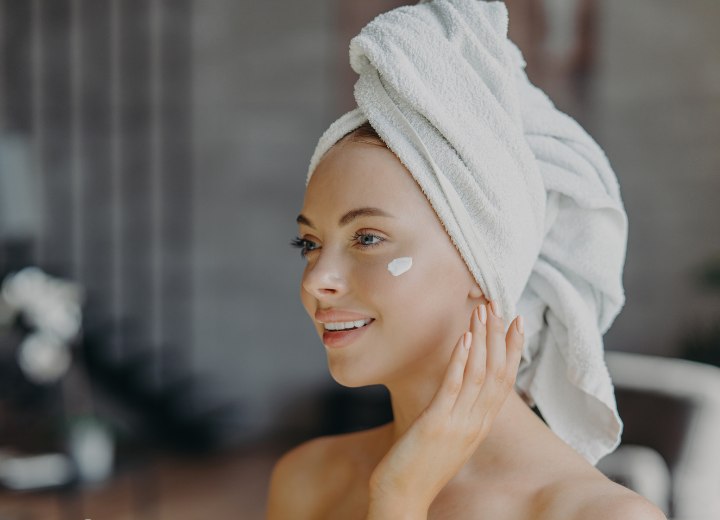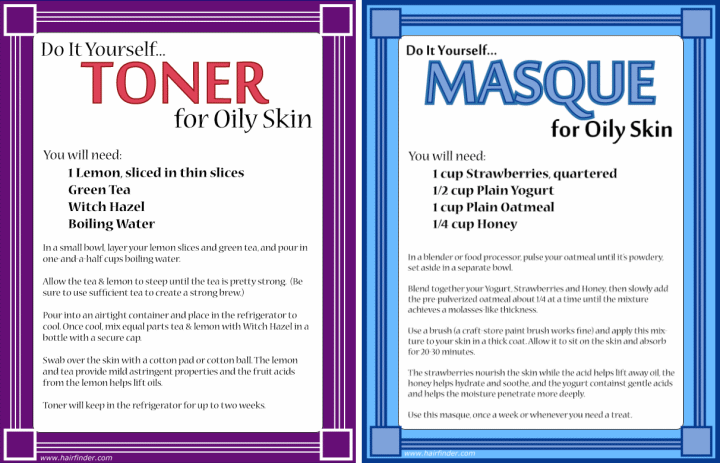A Look at Skin-Types

Traditionally, skin types have been broken down into 4 basic groups: Normal, Dry, Oily and Combination skin. However I’ve always felt that there should be two other types that must be considered: Sensitive skin, and Problem skin. Here’s how these skin types are defined:
Normal skin is just that – normal. It’s not too oily, not too dry, not too sensitive, has very little the way of problems. It generally does its job of protecting the body from infection by various bacterial and viral organisms as well as regulating the body’s temperature. Normal skin is smooth and has a clear tone and consistency. It’s blemish-free and has healthy glow.
Normal skin types can use most cosmetics on the market, though they rarely need much coverage. Clean healthy normal skin can employ tinted moisturizer or a lightweight liquid foundation as a ‘base’ for any other cosmetics and usually would do so only to provide a hint of color. Even though normal skin is usually resilient, you should develop habits that can help you to avoid problems, such as twice-daily cleansing and moisturizing, and never leaving your make-up on overnight.
When caring for your normal skin, you should select a cleanser that is gentle, but that leaves your skin feeling clean and refreshed. Wet your face with warm water and apply the cleanser and gently massage it over and around the face using the tips of the fingers without pressing down. You can also use a cotton puff to do this and provide a soft “scrub”. Rinse the face using warm water.
This can be most easily done in the shower, but if you’re working over your sink, simply soak a face cloth on warm water and completely saturate it. Take the dripping cloth and use it to wash away the cleanser from top to bottom, leaning over the sink to prevent the water from dripping all over you.
Afterward, gently pat the face with a clean, dry towel, and use a mild astringent to remove any residual cleanser. You can use the product you like best, but for an inexpensive and simple product, try Witch Hazel which can be purchased from your local drug store. After the astringent has been applied and allowed to dry, use a nice fast-absorbing moisturizer to keep the skin’s moisture balance optimal.
{Note: with any skin care routine, you can test your cleanser to see if it’s doing the right job for you. After using your cleanser, rinse the skin and pat it dry then let the skin finish drying on its own. As the skin dries, it should feel firm and slightly taut, and clean. If the skin feels too tight, or even a little itchy, your cleanser may be too harsh for your needs. If the skin feels s lick and begins to feel oily within an hour of cleansing, then you may need a stronger cleanser.}
Oily Skin

Oily skin is probably the type most commonly named among women who try to assess their own skin. There are a lot of women with Oily skin, but there are many women who incorrectly think that their skin is abnormally oily.
Oily skin is typically identified by being ‘shiny’ which can mean a slight sheen on the skin where light strikes it and can be as serious as to result in disrupting the coverage of make-up products being worn. The problems are often worse in warmer months and these times of year often necessitate some serious adjustment in the skin care routine.
Those with oily skin should pay careful attention to avoid purchasing and using cosmetics that contain oils in their ingredients list. An oil-based foundation applied to oily skin is simply a recipe for creating a clumpy-looking finish in a few hours of wear. Look for pressed-powder foundations and make-ups, or investigate the many “mineral make-ups” that are becoming widely available.
These provide light coverage, and help to absorb the excess oil from the skin, to give you a fresher, healthier glow and control the shine. (Regardless of the specific product you go with, aim for a matte finish, which will help your skin look healthier and will help you know when oil is resurfacing as a problem.
With oily skin, you will want to cleanse the skin at least twice a day (morning and night), adding a third cleansing in whenever possible (perhaps when you come home from work), and like with normal skin, never sleep in your make-up.
Cleansing and caring for oily skin requires the same kinds of care given to normal skin, but using slightly different products. In most cases, you can simply use a gentle cleanser, much like the kind you’d use with normal skin, but feel free to use ‘stronger’ cleanser formulas if you don’t feel that the cleanser is getting your skin clean enough (if it feels oily again within a few hours of cleansing).
Continue reading ...